#Interacting with locals in Bali
Explore tagged Tumblr posts
Text
Learning Balinese: Essential Phrases for Travelers

In the diverse tapestry of global cultures, immersing oneself in the local language can be a transformative experience. When it comes to exploring Bali, known for its best luxury resorts and vibrant nightlife, learning some essential Balinese phrases can greatly enhance your travel adventure. This article delves into the significance of grasping the basics and provides a comprehensive guide to mastering key expressions for travelers, ensuring you make the most of your stay at the best luxury resorts in Bali and fully enjoy the dynamic nightlife the island has to offer.
Basic Greetings
Saying "Hello": A warm greeting is the first step to connect with the vibrant Balinese community. Mastering phrases like "Om Swastiastu" can open doors to meaningful interactions.
Common Pleasantries: Politeness is highly valued in Balinese culture. Understanding phrases like "Suksma" (Thank you) and "Matur Suksma" (Thank you very much) is essential for seamless communication.
Asking for Directions
Navigating through the enchanting streets of Bali can be an adventure in itself. Equip yourself with phrases like "Nyang Adi Adi?" (Do you know the way?) to confidently explore the island. Locals appreciate visitors who make an effort to communicate in their language.
Ordering Food
Embarking on a culinary journey in Bali requires some linguistic preparation. Master the art of ordering with expressions like "Mangkin" (Now) or "Luh maen keto?" (What do you want to eat?). Understanding dietary preferences ensures a delightful gastronomic experience.
Emergency Phrases
While exploring the picturesque landscapes, it's crucial to be prepared for unforeseen situations. Learn phrases like "Ajeg" (Help) to seek assistance when needed. Knowing how to communicate in emergencies fosters a sense of security.
Cultural Expressions
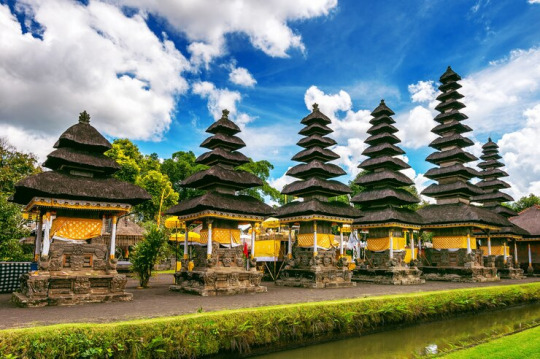
Immersing yourself in the local culture involves more than just sightseeing. Grasp phrases like "Om Swastiastu" (May God bless you) to express respect for Balinese customs. Engaging in cultural expressions enhances your travel experience.
Shopping Phrases
Navigating bustling markets requires some bargaining skills. Learn phrases like "Iki pira?" (How much is this?) to strike a fair deal. Politeness combined with a bit of local language can lead to memorable shopping experiences.
Transportation Phrases
Getting around Bali efficiently involves effective communication with drivers. Master phrases like "Menumpang" (Can I get a ride?) to make your journey smoother. Learning transportation phrases ensures hassle-free exploration.
Numbers and Currency
Basic numerical understanding is essential when dealing with transactions. Learn phrases like "Satus" (One hundred) and "Seratus Rupiah" (One hundred Rupiah) for seamless financial interactions.
Weather Conversations
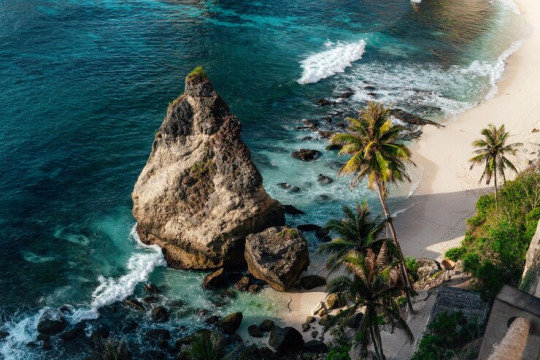
Discussing weather conditions in Balinese is not only practical but also a great conversation starter. Learn phrases like "Cuaca pedi" (The weather is hot) to navigate through different climates during your travel.
Expressing Gratitude
Saying "Thank You" is a universal gesture of appreciation. Master phrases like "Matur Suksma" to express gratitude and acknowledge the warmth of Balinese hospitality.
Time-related Phrases
Being aware of the local time and scheduling activities efficiently is essential. Learn phrases like "Jam piro?" (What time is it?) to stay on track during your exploration of the island.
Interacting with Locals
Breaking the ice with locals requires a friendly approach. Phrases like "Apa kabar?" (How are you?) open doors to casual conversations and help build connections with the community.
Essential Phrases Recap
In summary, embracing the Balinese language enriches your travel experience. From basic greetings to navigating through local customs, these essential phrases serve as a bridge between you and the vibrant Balinese culture. Language becomes a tool for deeper connections and a more immersive exploration of this captivating island.
Conclusion

As you embark on your journey to Bali, remember that learning the local language is not just a practical skill but a gateway to cultural understanding. By incorporating these essential Balinese phrases into your repertoire, you not only enhance your travel experience but also show respect for the rich heritage of this enchanting island.
#Balinese phrases#Travel language essentials#Learning local language#Cultural immersion in Bali#Greetings and pleasantries in Balinese#Navigating Balinese streets#Ordering food in Bali#Emergency phrases for travelers#Balinese cultural expressions#Shopping tips and phrases in Bali#Transportation communication in Balinese#Currency and numerical expressions#Weather conversations in Bali#Expressing gratitude in Balinese#Interacting with locals in Bali
0 notes
Text
Iron Age links between central Vietnam, the Philippines, and Southeast Asia
When discussing Southeast Asian trading networks, the Sa Huynh-Kalanay Interaction Sphere exemplifies the kind of cross-regional social-economic system that operated during the Iron Age. In the years approximately 500 BC through AD 100, a remarkable continuity is witnessed in decorated pottery, specific forms of earring, and other specialized goods found on both sides of the central South China Sea. Other interaction spheres operated contemporaneously, and some can be traced to earlier origins.
[…] At least two large-scale cross-regional networks simultaneously linked different shores around the South China Sea. The world-famous Dong Son culture of northern Vietnam generated far-reaching spectacular impact via export of ornate kettle-drums into Mainland Southeast Asia and the southern islands of Indonesia, including Sumatra, Java, Bali, and Nusa Tenggara. Dong Son, however, lacked any clear presence in the northern and central reaches of the South China Sea in Taiwan, the Philippines, and most of Borneo. The contemporary but very distinct Sa Huynh-Kalanay network served these latter regions and was one of the main catalysts for their cultural transition into metallurgy.
Unlike China and the countries of Mainland Southeast Asia, the island regions such as Taiwan and the Philippines lacked a separate Bronze Age prior to the appearance of iron. Between 500 and 300 BC, these regions received a sudden influx of new types of artifacts and new materials that were imposed directly on a Neolithic cultural background. These included Indo-Pacific glass beads, siliceous stone beads, iron and cupreous metal (copper and bronze), and moulds of stone or baked clay for casting small cupreous items such as socketed adzes and spearheads.
[…] Our studies have revealed that the nephrite used for making many of these ear ornaments, especially those of green jade, originated from the Fengtian nephrite source in eastern Taiwan. The interesting fact is that the raw material itself came from Taiwan, while the ear ornaments themselves were often produced locally in the Philippines, southern Vietnam and southern Thailand, using Taiwan raw materials, especially sawn square tablets of Fengtien nephrite. We conjecture that these were blanks, carried by sea from Taiwan to local workshops in other regions of Southeast Asia.
Excerpt from “Coastal Connectivity: Long-Term Trading Networks Across the South China Sea” (2013) by Hsiao-chun Hung et. al.
24 notes
·
View notes
Text
The Spread of Islam to Malaysia & Indonesia
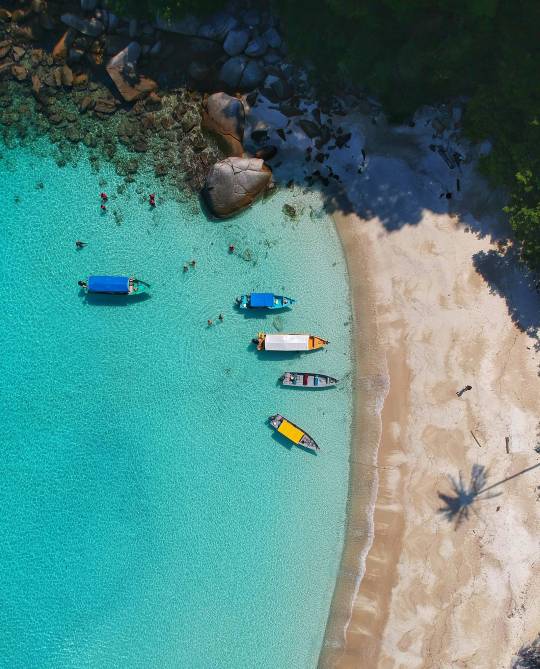
Islam’s journey to Malaysia and Indonesia is a story of peaceful coexistence and the gradual acceptance of Islam. Islam first reached Southeast Asia through trade routes, primarily conducted by Arab and Indian merchants. These traders brought not only goods but also the teachings of Islam, which gradually took root among the local populations and was closely linked to trade and cultural exchange. Muslim traders established settlements along the coastlines, where they interacted with the local communities, shared their beliefs, and built mosques and Islamic institutions foundational to Muslim communities.
Let there be no compulsion in religion, for the truth stands out clearly from falsehood.1 So whoever renounces false gods and believes in Allah has certainly grasped the firmest, unfailing hand-hold. And Allah is All-Hearing, All-Knowing. Quran 2:256
The conversion to Islam in Malaysia and Indonesia was largely peaceful, Sufi missionaries traveled to remote areas, spreading Islam through their exemplary conduct, spiritual teachings, and community work. Islamic teachings emphasised the importance of kindness and justice towards all people, regardless of their faith resulting in great tolerance and co-existance with non-Muslims
Allah does not forbid you from dealing kindly and fairly with those who have neither fought nor driven you out of your homes. Surely Allah loves those who are fair. Quran 60:8
Islam, as practiced in Malaysia and Indonesia today, upholds the rights of non-Muslims. Both countries have constitutions that guarantee freedom of religion and protect the rights of religious minorities to practice their faith without discrimination.
One such example is in Bali, which is predominantly Hindu, and the local government ensures that Hindu traditions and practices are preserved and respected. Balinese Hindus have the freedom to celebrate their religious festivals, maintain their temples, and uphold their cultural heritage without any restrictions.
“To you be your religion, and to me my religion” Quran 109:6
Prophet Muhammad (peace be upon him) set the example of treating non-Muslims with kindness and compassion, said:
“Whoever harms a non-Muslim citizen, I am his adversary, and I shall be an adversary to him on the Day of Judgment” (Bukhari).
The spread of Islam to Malaysia and Indonesia was marked by peaceful interaction, cultural exchange, and the embodiment of Islamic values such as tolerance and compassion. Today, these countries stand as shining examples of pluralistic societies where people of different faiths live harmoniously, guided by the timeless principles of Islam.
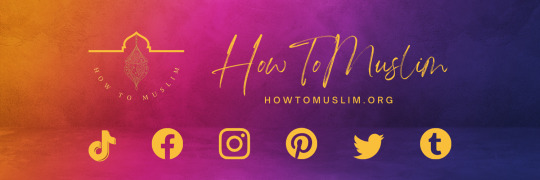
#islamicreminders#muslim#allah#quran#mosque#islamic#islamdaily#islamiyet#islam#new article#malaysia#indonesia
12 notes
·
View notes
Text
Unpacking the Mind: How Exploring the World Broadened My Horizons
How Travel Changed My Perspectives
Travel has continually been described as a transformative revel in. It is more than simply the act of moving from one place to another—it's far an immersion into specific cultures, existence, and mindsets. For me, traveling has been not anything short of life-converting. It has reshaped how I view the arena, people, and even myself. Through tour, I even have encountered various realities, difficult the narrow confines of my preconceptions. Each adventure I’ve undertaken has been a lesson in empathy, adaptability, and personal growth, and the views I’ve won have deeply enriched my know-how of life.
Broadening Horizons
One of the maximum immediate ways Tour has altered my angle is by broadening my horizons. Growing up in familiar surroundings, I advanced a certain way of searching the sector. My views have been prompted by means of the norms and values of my community, and I have not often wondered about them. However, getting into a one-of-a-kind us of a or culture quickly confirmed to me how restricted my outlook became.
For instance, once I visited Japan, I became struck with the aid of the idea of omotenashi, a term that embodies selfless hospitality and appreciation for others. The interest in detail and thoughtfulness of their interactions taught me how cultural values form behavior. Back domestic, I realized I should incorporate small acts of thoughtfulness into my daily existence, making my relationships more significant. Similarly, exploring the vibrant chaos of India taught me a way to include unpredictability. In an area in which spontaneity reigns superbly, I discovered to allow move of rigid plans and experience the moment—a treasured talent I added again to my dependent global.
Developing Empathy
Travel has a unique manner of fostering empathy. Meeting humans from different lifestyles allows you to see the world through their eyes. When I visited a rural village in Peru, I could stay with a local circle of relatives for a week. Their way of life has become hugely one of a kind from mine—modest homes, confined sources, and difficult bodily work to make ends meet. Yet, what stood out to me turned into their resilience, pleasure, and sturdy sense of network. Despite having some distance fewer fabric possessions than I did, they had been rich in relationships and generosity.
This experience shattered my assumptions about happiness and success. I started out to question my very own priorities, figuring out that the relentless pursuit of fabric wealth regularly blinds us to the easy joys in lifestyles. It also made me more appreciative of the privileges I frequently take for granted, like access to clean water, schooling, and healthcare.
Challenging Stereotypes
Travel has also taught me how risky and limiting stereotypes can be. Before visiting the Middle East, I had unconsciously absorbed many media-driven biases about the vicinity. However, spending time in countries like Jordan and Oman revealed a totally different reality. I encountered warm hospitality, breathtaking landscapes, and wealthy histories that confounded the poor portrayals I had seen inside the information.
This experience emphasized the importance of forming critiques based on firsthand interactions instead of secondhand narratives. It made me greater cautious about generalizing or judging others primarily based on incomplete or biased statistics. I now try to technique people and places with interest in preference to assumptions, seeking to understand their complexities rather than oversimplifying them.
Embracing Diversity
Traveling has exposed me to an extraordinary array of cultures, languages, and traditions. From the elaborate dances of Bali to the historic rituals of Indigenous Australians, I’ve learned to comprehend the splendor of human variety. Experiencing these differences firsthand has reinforced the concept that there's no single “accurate” way to live. Instead, each way of life offers something precise, whether or not it’s a way of solving troubles, celebrating existence, or locating which means.
Moreover, gaining knowledge of approximately unique belief structures and worldviews has increased my highbrow curiosity. For example, my time in Buddhist monasteries in Thailand brought me to the concept of mindfulness, which has since end up a cornerstone of my everyday life. Similarly, expertise in the Māori idea of kaitiakitanga—guardianship of the land—has deepened my sense of environmental responsibility.
Building Adaptability
Travel is complete of surprises, both suitable and terrible. From overlooked flights to language boundaries, it frequently pushes you out of your comfort sector. At first, I found these demanding situations irritating, but over the years, I found out they have been valuable lessons in adaptability.
For example, while backpacking through Europe, I as soon as got stranded in a small Italian town because of a train strike. With no instantaneous solutions in sight, I had to suppose on my ft, counting on a mixture of damaged Italian, hand gestures, and help from locals to find a place to live. This taught me to stay calm under pressure and technique problems with a bendy mindset. I now see limitations as opportunities to grow instead of insurmountable obstacles.
Redefining Success and Happiness
Traveling has also reshaped my knowledge of achievement and happiness. In Western society, success is frequently equated with career achievements, financial wealth, and social reputation. However, my travels have proven to me that those definitions vary widely across cultures.
In the Scandinavian nations, I encountered the concept of lagom, which means “just the right quantity.” This philosophy emphasizes stability and contentment, encouraging human beings to find joy moderately rather than excess. Contrastingly, my time in African countries like Kenya discovered the value of ubuntu, a feel of communal interconnectedness. These perspectives challenged my individualistic notions of fulfillment, inspiring me to cognizance more on relationships, nicely-being, and network.
Rediscovering Myself
Perhaps the maximum profound change the tour has brought approximately is the manner it has helped me rediscover myself. Being in unfamiliar environments strips away the distractions of daily existence, forcing you to confront your real self. It has encouraged me to mirror my values, fears, and aspirations.
For instance, while trekking within the Andes, surrounded by way of awe-inspiring landscapes, I felt a deep feeling of humility and connectedness to something other than myself. This experience bolstered my notion of the significance of maintaining nature and residing sustainably. Similarly, my solo journey has taught me to enjoy my personal enterprise, building self-self-assurance and independence.
Inspiring Lifelong Learning
Finally, my journey has instilled in me a love for lifelong mastering. Every destination has its very own tales, histories, and lessons to provide. Whether it’s the know-how of the architectural marvels of historic civilizations or mastering the way to cook a neighborhood dish, the journey constantly feeds my curiosity. It has made me greater open to new experiences and extra eager to increase my knowledge.
3 notes
·
View notes
Text
Unveiling Bali's Must-Visit Gems: A Traveler's Guide
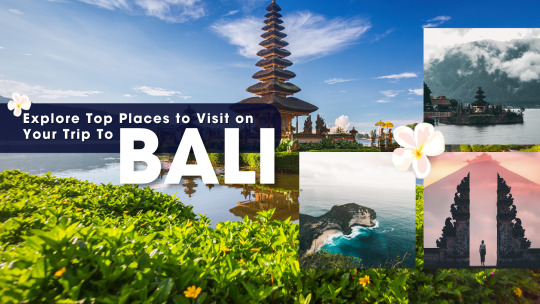
Embark on your journey hassle-free! For any travel-related query, trust Sarvodaya Holiday. Visit us at www.sarvodayaholiday.com today!
Bali, often hailed as the "Island of the Gods," is a mesmerizing destination that offers a blend of natural beauty, cultural richness, and adventure. With its lush landscapes, stunning beaches, vibrant culture, and warm hospitality, Bali beckons travelers from across the globe. If you're planning a trip to this Indonesian paradise, here's a curated list of top places to explore to make your Bali experience truly unforgettable.
1. Ubud: Cultural Heart of Bali
Nestled amidst terraced rice paddies and lush rainforests, Ubud is a haven for art lovers, nature enthusiasts, and spiritual seekers. Explore the town's vibrant markets, where you can shop for handmade crafts, textiles, and intricate artwork. Visit the Sacred Monkey Forest Sanctuary to observe playful macaques in their natural habitat, or rejuvenate your body and soul with a yoga class or traditional Balinese spa treatment.
2. Uluwatu Temple: Cliffside Serenity
Perched on the edge of dramatic cliffs overlooking the Indian Ocean, Uluwatu Temple is renowned for its breathtaking sunset views and traditional Kecak dance performances. Explore the temple grounds, adorned with intricate stone carvings, and witness the mesmerizing sight of the sun sinking below the horizon as the waves crash against the cliffs below.
3. Tanah Lot: Iconic Sea Temple
A symbol of Bali's spiritual heritage, Tanah Lot is a majestic sea temple perched atop a rocky outcrop, surrounded by the shimmering waters of the Indian Ocean. Marvel at the temple's timeless beauty as it appears to float on the horizon, especially during sunset when the sky is painted in hues of orange and gold. Don't forget to explore the surrounding area, where you'll find local markets and cultural performances.
4. Tegallalang Rice Terraces: Picturesque Landscapes
Located just north of Ubud, the Tegallalang Rice Terraces offer a glimpse into Bali's agrarian heritage with their intricate system of stepped rice paddies. Trek through the emerald-green fields, marveling at the stunning vistas and interacting with local farmers as they tend to their crops. Capture postcard-perfect photos of this iconic landscape, which has graced the covers of countless travel magazines.
5. Nusa Penida: Untouched Paradise
Escape the crowds and discover the raw beauty of Nusa Penida, a rugged island located southeast of Bali. With its pristine beaches, towering cliffs, and crystal-clear waters teeming with marine life, Nusa Penida is a paradise for snorkelers, divers, and nature lovers. Visit iconic landmarks such as Kelingking Beach and Angel's Billabong, or embark on a scenic hike to explore hidden waterfalls and secluded coves.
6. Seminyak: Chic Beachside Retreat
Indulge in luxury and relaxation in Seminyak, Bali's upscale beach resort town known for its trendy beach clubs, boutique shops, and world-class dining scene. Lounge on pristine beaches, sip cocktails at stylish beachfront bars, or pamper yourself with a spa day at one of the many luxury resorts. After dark, experience Seminyak's vibrant nightlife with live music, DJ sets, and beach bonfires under the stars.
7. Mount Batur: Sunrise Trekking Adventure
For outdoor enthusiasts seeking adventure, a sunrise trek to the summit of Mount Batur is a must-do experience. Begin your journey in the early hours of the morning, hiking through the darkness to reach the summit in time for sunrise. As the first light of dawn illuminates the landscape, revel in panoramic views of the surrounding mountains, crater lakes, and distant islands—a truly awe-inspiring moment that will stay with you forever.
Conclusion
From the verdant rice terraces of Ubud to the pristine beaches of Nusa Penida, Bali offers a diverse array of experiences that cater to every traveler's preferences. Whether you're seeking cultural immersion, outdoor adventure, or simply relaxation in a tropical paradise, Bali's top attractions promise an unforgettable journey filled with beauty, adventure, and enchantment. So pack your bags, embark on a Bali trip, and prepare to be enchanted by the magic of this timeless island destination.
#balitravel#bali tour package#baliindonesia#bali#adventure#tourism#travel#traveling#travel agency#travel agency in india#travel destinations#trip#wanderlust#tourist#vacation#holiday#balin
6 notes
·
View notes
Text
EIN Registration for Global Entrepreneurs: Why Bizsimpl Global is the Smartest Choice for 2025

In today’s borderless business landscape, having the flexibility to scale internationally is more than a luxury—it’s a necessity. Whether you're a SaaS founder in Berlin, a digital nomad in Bali, or a consultant in Dubai, expanding to the U.S. market can unlock major growth potential. But one often-overlooked step can halt your progress before it starts: EIN Registration.
The Employer Identification Number (EIN) is your company’s federal tax ID in the United States. And without it, opening U.S. bank accounts, onboarding with Stripe or PayPal, and staying compliant with the IRS becomes nearly impossible.
That’s where Bizsimpl Global steps in. From entity formation to EIN Registration and compliance, Bizsimpl Global provides an all-in-one launchpad for businesses looking to establish a U.S. presence—no matter where you're from.
What Makes EIN Registration Essential for Digital Businesses?
If you run an online business, you might think local compliance is enough. But the moment you interact with the U.S. financial system—be it through investors, clients, or payment gateways—EIN Registration becomes mandatory.
Here’s why:
Stripe, Mercury, Brex, and PayPal require an EIN to verify your U.S. business.
U.S. clients may request a W-9, which requires an EIN.
Filing U.S. corporate tax returns for LLCs or C-Corps requires a valid EIN.
Partnerships or UBO structures need EINs for proper IRS reporting.
EIN unlocks faster onboarding for international banking integrations.
In short, it’s not just about tax compliance—it’s about financial credibility and operational capability.
Digital Nomads and International Founders: Here’s Why You Need an EIN
More and more entrepreneurs are embracing location independence. But many don’t realize that when you:
Sell digital products to U.S. customers,
Offer freelance services remotely,
Launch a Delaware C-Corp to attract global funding,
—you need to go through EIN Registration to function legally and efficiently.
Even if you don’t live in the U.S., the IRS requires a federal identification number for any company with:
U.S.-based transactions
U.S. employees or contractors
A physical or mailing address in the U.S.
Taxable activities under U.S. law
With Bizsimpl Global, location is no longer a limitation. We help you register your EIN and business entity from anywhere in the world.
How Bizsimpl Global Empowers EIN Registration for Non-U.S. Residents
For non-resident founders, getting an EIN through the IRS can feel like a maze. The process is outdated, slow, and not optimized for remote founders. Bizsimpl Global removes these roadblocks.
Here's how our EIN Registration service works:
✅ We fill your Form SS-4 accurately, avoiding rejections. ✅ No SSN or ITIN? No worries. We provide alternative methods for foreign founders. ✅ We submit via fax or mail to the IRS, tracking and updating you regularly. ✅ We handle EIN re-issuance or corrections, if needed. ✅ We store your EIN documents securely for future banking or licensing use.
You’ll never have to wait on hold with the IRS or deal with confusing forms again.
Strategic Benefits of EIN Registration You May Not Know
Beyond the basics, EIN Registration opens doors to a number of strategic advantages that most international founders aren’t aware of:
1. Access to U.S. Banking & Credit
With an EIN and a registered U.S. entity, you can open business accounts with fintech platforms like Mercury or Brex—crucial for handling international payments, receiving venture capital, and automating your finances.
2. Stronger Tax Positioning
Having an EIN allows you to file the proper tax documents like Form 1120, 5472, or 1040NR. This helps you avoid penalties, benefit from treaties, and optimize your international tax liability.
3. Global Investor Confidence
Many U.S. or VC investors won’t invest in a startup without proper incorporation and EIN Registration. It signals seriousness, legitimacy, and IRS compliance.
4. Frictionless App Integrations
Platforms like Shopify, Amazon FBA, and Facebook Ads often require a U.S. tax ID (EIN) for business verification, especially for ad payments and payouts.
Use Cases: How Real Entrepreneurs Benefit from EIN Registration with Bizsimpl Global
🚀 Case Study: Bootstrapped App Founder from Singapore
A solo founder building a mobile app needed a U.S. bank account and Apple Developer access. With no SSN and no prior U.S. presence, he couldn’t register. Bizsimpl Global helped him form a Wyoming LLC and complete EIN Registration in under 10 days. He now sells globally and collects revenue in USD.
📦 Case Study: eCommerce Business from UAE
An Amazon seller based in Dubai wanted to expand to Amazon U.S. Bizsimpl Global set up her LLC, filed for her EIN, and enabled her to create an Amazon Seller Central account within 2 weeks.
Common Challenges Solved by Bizsimpl Global
Most founders hit the same roadblocks:
❌ Not having a U.S. address ❌ Rejected EIN applications due to incorrect forms ❌ Delayed mail or lost IRS letters ❌ Confusion about whether EIN is needed for passive income businesses ❌ Wasting weeks trying to fax international documents
With Bizsimpl Global, these are non-issues. Our team handles EIN Registration professionally with guaranteed support, even for first-time founders and bootstrapped teams.
Top Tips for EIN Registration Success
💡 Use a consistent U.S. address (virtual or registered agent). 💡 List the actual business owner or “responsible party” clearly. 💡 Don’t leave Section 10 of the SS-4 blank—it indicates why you're applying. 💡 Get EIN before opening bank accounts or applying to platforms like Stripe. 💡 Store your IRS confirmation letter (CP 575) safely—you’ll need it often.
Conclusion: Start Your EIN Registration Today with Bizsimpl Global
Whether you’re building the next big startup or just launching your freelance brand globally, EIN Registration is the backbone of your U.S. business identity. And with Bizsimpl Global, the process becomes easy, fast, and accurate.
We don’t just help you register—we partner with you for long-term success. From incorporation and EIN setup to compliance and tax guidance, we’re your one-stop solution for launching businesses across 25+ countries.
👉 Ready to take the first step? Start your EIN Registration with Bizsimpl Global today and unlock the U.S. market with confidence.
#EINRegistration#BizsimplGlobal#USBusinessLaunch#IRSCompliance#GlobalFounders#RemoteEntrepreneurs#USATaxID#StartupInUSA#BizsimplEntityFormation#InternationalBusiness
0 notes
Text
Top SEO Strategies for Travel Businesses to Rank Higher in 2025
Today’s travelers are planners, researchers, and explorers most of whom begin their journey not at the airport, but on a search engine. If your travel business isn’t ranking on Google, you're missing out on potential bookings. Whether you're a tour operator in Kerala or a boutique hotel in Santorini, showing up in search results can be the difference between steady bookings and empty rooms.
To stay visible and competitive in 2025, travel brands need more than just a website. They need a smart, adaptable SEO strategy. This is where expert digital marketing partners like SVB Digital Marketing Services can make all the difference providing customized solutions that align with industry trends.
Let’s explore the most impactful SEO strategies for travel businesses to thrive this year.
1. Embrace E-E-A-T to Build Trust
Google rewards content that demonstrates Experience, Expertise, Authoritativeness, and Trustworthiness (E-E-A-T). For travel brands, this means sharing real stories, firsthand tips, and well-researched information.
Practical Ways to Implement:
Publish blog content written by local experts or tour leaders.
Include traveler testimonials and safety certifications.
Use author bios and trust-building visuals like awards or affiliations.
A skilled digital marketing agency will help you craft and position content that earns trust both from users and search engines.
2. Target Long-Tail, Intent-Focused Keywords
In 2025, the competition for generic keywords like “best hotels in Bali” is intense and often ineffective. Long-tail keywords, on the other hand, attract users with specific search intent.
Pro Tips:
Focus on phrases like “family-friendly beach resorts in Bali” or “solo female travel guide to Vietnam.”
Use tools like Ubersuggest, Semrush, or AnswerThePublic to uncover emerging queries.
Create FAQ-rich pages to increase visibility for voice searches.
When implemented correctly, digital marketing services for travel companies can help identify and optimize these keyword opportunities with precision.
3. Balance AI Tools with Human Storytelling
AI is transforming how we research, plan, and publish content but in travel, human storytelling still wins hearts.
Pro Tips:
Use AI tools for keyword clustering and topic ideation.
Pair data-driven outlines with original, emotion-rich content.
Focus on destination guides, packing lists, or local insights that blend SEO with user value.
SVB Digital Marketing Services combines technology with content creativity ensuring every piece of content ranks well and resonates even better.
4. Double Down on Local SEO
Many travelers search for options close to where they’re staying like “vegan café near Eiffel Tower” or “kayaking tours in Alleppey.” Local SEO is crucial if your business is location-based.
Must-Do Actions:
Claim and optimize your Google Business Profile.
Use geo-targeted keywords in titles and meta descriptions.
Encourage happy customers to leave reviews with photos.
A digital marketing company experienced in travel SEO can boost your local presence and help you rank for high-conversion “near me” searches.
5. Invest in Visual and Interactive Content
The travel industry is deeply visual people want to see before they book. Enhancing content with media can dramatically improve engagement and time on site.
Implementation Ideas:
Use high-resolution images with optimized alt text.
Add 360° virtual tours, interactive maps, and destination videos.
Ensure image compression for mobile-friendly performance.
Your SEO strategy shouldn’t just be about words. A partner like SVB Digital Marketing Services can elevate visual storytelling while maintaining page speed and accessibility.
6. Improve Mobile UX & Core Web Vitals
In 2025, mobile-first indexing is no longer a trend it’s the standard. If your site doesn’t load fast or display properly on smartphones, you're likely losing rankings (and customers).
Tips to Stay Ahead:
Ensure a responsive, clutter-free design.
Optimize buttons and forms for mobile interaction.
Test regularly using Google’s PageSpeed Insights and Core Web Vitals metrics.
Working with a performance-oriented marketing partner ensures that technical SEO supports your on-page strategy.
7. Build Quality Backlinks Through Smart Outreach
Backlinks still play a big role in organic rankings. However, in travel, it’s about quality not quantity.
Best Practices:
Collaborate with travel bloggers, influencers, or media outlets.
List your services on tourism boards and credible directories.
Create shareable content like “ultimate city guides” or “hidden gem lists.”
An experienced digital marketing company for travel agency growth will help you secure relevant, high-authority backlinks that elevate your domain authority.
8. Refresh Existing Content for Continued Performance
Old blog posts and static pages can become outdated quickly especially when travel regulations or local attractions change.
Refresh Checklist:
Update statistics, pricing, and service details.
Add new destinations, activities, or tips.
Re-index in Google Search Console for faster crawling.
This is one of the most cost-effective SEO strategies, and it’s something SVB Digital Marketing Services integrates into their ongoing optimization plans.
Final Word
In a crowded travel marketplace, ranking higher in search results can create a consistent pipeline of organic traffic, trust, and conversions. But it takes more than luck it takes strategy, agility, and the right partner.
With proven expertise in the travel domain, SVB Digital Marketing Services empowers brands with tailored SEO, content marketing, and conversion strategies that drive measurable growth. Whether you’re just starting out or looking to scale, having the right digital team behind you can transform how (and where) travelers discover you.
#social media marketing#digital marketing agency#digital marketing#digital marketing agency in pune#digital marketing company in india#google ads#emailmarketing#search engine optimization#digital marketing companies pune#digital marketing services
0 notes
Text
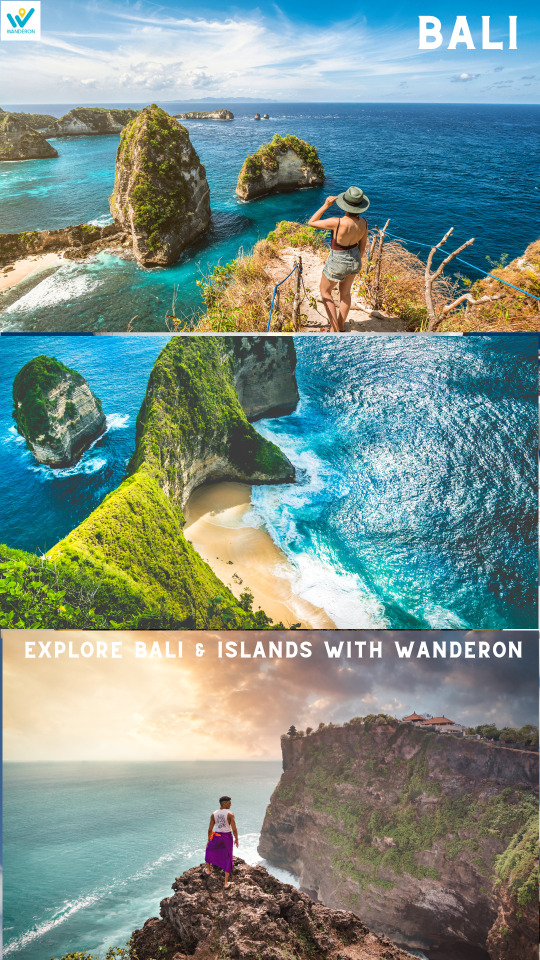
Discover the magic of Bali and its stunning neighboring islands with WanderOn. From tranquil beaches and lush rice terraces to vibrant nightlife and rich culture, this journey offers the perfect mix of relaxation and exploration. Enjoy thrilling water sports, spiritual temples, scenic waterfalls, and curated experiences that reflect the soul of Indonesia. With seamless planning, expert guides, and immersive local interactions, WanderOn ensures every moment of your trip is memorable.
0 notes
Text
Travelling with Respect: The Role of Ethics and Netiquette in Tourism
youtube
Many of us have seen this viral video of this woman being rude and inconsiderate in Thailand. That is why we are here to discuss how to behave when visiting another place. Tourism is like a gateway to a world filled with diverse cultures, languages, stunning landscapes, and fascinating people. It’s one of the most rewarding ways to broaden our understanding of the globe. However, amidst the thrill of discovering new destinations, it’s crucial to remember one key aspect our behaviour as tourists truly matters. Whether we’re exploring iconic landmarks, wandering through local markets, or enjoying serene towns, we should let ethics and netiquette guide our actions, both in person and online.
At its heart, ethical tourism is all about being aware of how our choices impact local communities, environments, and cultures. It goes beyond just “not littering” — it’s about showing genuine respect, steering clear of exploitation, and acknowledging that we are, in fact, guests in these places. For example, while haggling hard in economically disadvantaged areas or snapping photos of locals without their permission might not be illegal, they raise ethical questions. These seemingly small interactions can accumulate, influencing how locals perceive tourism in their everyday lives.
A significant issue today is the tight relationship between tourism and social media. Platforms like Instagram, TikTok, and YouTube have transformed travel into a form of content creation, with many travellers pursuing the “perfect shot” without considering the repercussions. In popular spots like Bali or Santorini, tourists have been known to trespass on private property or disturb locals just to capture a photo. There have even been instances where individuals have harmed nature or historical sites in their quest for viral fame. This is where netiquette or online netiquette comes into play. The content we choose to share can either showcase cultural appreciation or lead to negative consequences.
Being respectful online starts with asking ourselves a few important questions: Is this photo or caption appropriate? Am I making fun of something I don’t fully understand? Am I sharing something that might misrepresent or offend a culture? Even when we write harsh reviews or publicly complain about a place that didn’t meet our expectations, it can come off as entitled or disrespectful, especially if we do so without context or understanding.
Another key part of ethical tourism is cultural sensitivity. Every country has its own values and customs, and as visitors, it’s our responsibility to learn and adapt, not the other way around. Dressing modestly in conservative areas, following local rules, and being mindful of body language or gestures can really make a difference. Tourists who overlook these norms, whether out of ignorance or indifference, risk being disrespectful and perpetuating negative stereotypes.
Responsible tourism also means being aware of our environmental impact. Overtourism in popular destinations like Venice, Machu Picchu, or Mount Everest has led to pollution, overcrowding, and damage to cultural sites. Opting for eco-friendly tours, cutting down on plastic waste, and choosing to stay in locally owned accommodations are simple yet effective ways to travel more responsibly.
In conclusion, travelling isn’t just about visiting new places — it’s about how we engage with those places. Whether we’re exploring cities, lounging on beaches, or hiking in the mountains, tourists have an ethical duty to treat people, cultures, and the environment with respect. And in today’s digital world, our responsibility also includes how we share those experiences online. By practising good ethics and netiquette, we can become better travellers, not just in the eyes of others, but in how we learn and grow through our adventures. Written by Hayden Chan (1211101655)
References
Ethical Tourism: The Rise of Conscious Traveller Behaviour. (n.d.). Longdom Publishing. https://www.longdom.org/open‑access-pdfs/ethical-tourism-the-rise-of-conscious-traveler-behavior.pdf ispo.com+2longdom.org+2int-jecse.net+2
Schlauderaff, F., et al. (2022). Machu Picchu case study. International CHRIE. https://www.chrie.org/assets/docs/JHTC‑vol10‑issue1.pdf cntraveler.com+4chrie.org+4researchgate.net+4
Thraenhart, J. (2024, April 14). Fostering balanced tourism: The role of social influencers, content creators, and bloggers. Balanced Tourism. https://balancedtourism.com/2024/04/14/fostering-balanced-tourism… sciencedirect.com+2balancedtourism.com+2smartvel.com+2
Smartvel. (2023). The impact of influencers on tourism. Smartvel. https://www.smartvel.com/resources/blog/the-impact-of-influencers‑on‑tourism smartvel.com
Penn State School of Hospitality Management. (2025, February 20). Influencer marketing can help tourism industry mitigate waste, pollution. Penn State News. https://www.psu.edu/news/… bi.team+9psu.edu+9greenlodgingnews.com+9
Dolnicar, S., & Grün, B. (2023). A measure of tourist responsibility. MDPI Sustainability, 13(6), 3351. https://www.mdpi.com/2071‑1050/13/6/3351 mdpi.com+1en.wikipedia.org+1
National Geographic. (2023). Is overtourism a problem? National Geographic. https://www.nationalgeographic.com/travel/article/what‑is‑overtourism nationalgeographic.com+1cntraveler.com+1
Greenlodging News. (2024, April). Harnessing the power of social media for sustainable tourism: The role of green influencers. Greenlodging News. https://www.greenlodgingnews.com/… greenlodgingnews.com
European Parliament. (2018). Overtourism: Impact and possible policy responses (PE 629.184). https://www.europarl.europa.eu/RegData/etudes/STUD/2018/629184/… journals.sagepub.com+2europarl.europa.eu+2investigacionesregionales.org+2
Invest. (n.d.). Venice: The problem of overtourism and the impact of cruises. Investigaciones Regionales. https://investigacionesregionales.org/en/article/venice‑the‑problem‑of‑overtourism … investigacionesregionales.org+1redalyc.org+1
Guardian. (2024, April 28). The Observer view on overtourism: Sometimes, the planet’s hotspots are best left unvisited. The Guardian. https://www.theguardian.com/commentisfree/2024/apr/28/… theguardian.com
0 notes
Text
Managing Cross-Border Team Collaboration During Workcations
The traditional boundaries of work and travel are quickly dissolving, giving rise to the “workcation” — a hybrid of work and vacation that allows employees to explore new places while staying productive. Enabled by flexible work policies and technology, workcations offer freedom and inspiration, but they also come with unique challenges — especially when it comes to managing teams scattered across different time zones and legal jurisdictions.
For companies embracing global talent and flexible work arrangements, learning how to manage cross-border collaboration during workcations is essential to maintaining team cohesion, productivity, and performance.
Here’s a deeper dive into five key strategies to manage your distributed team effectively during workcations:
1. Set Clear Expectations and Boundaries from the Start
Before an employee heads off to work from Bali or Barcelona, there should be a conversation — and ideally, a formal agreement — about what is expected. This ensures alignment between team members, managers, and HR.
Best practices:
Define expected working hours relative to their local time zone.
Set guidelines on responsiveness — e.g., whether replies are needed within a few hours or by end-of-day.
Identify key deliverables and ensure deadlines align with the employee’s travel plans.
Clarify how much leisure time is acceptable, and if there are any restrictions on travel days overlapping with workdays.
Why it matters: Without clear ground rules, employees may either overextend themselves or unintentionally disconnect from team workflows. Clear expectations protect both productivity and employee well-being.
2. Embrace Asynchronous Communication Over Real-Time Dependence
One of the biggest barriers to workcation success is real-time communication. Expecting someone in Tokyo to join a 9 a.m. EST meeting every day isn’t sustainable.
Instead, teams should build an asynchronous-first culture:
Use project management tools like Asana, Trello, or Monday.com to assign tasks, share updates, and track progress without live meetings.
Encourage written and recorded updates, such as Loom videos or weekly recap emails.
Create centralized documentation using Notion, Confluence, or Google Docs, so anyone can catch up independently.
Pro tip: Establish a communication playbook outlining which tools to use, when to escalate issues, and how to hand off tasks across time zones.
3. Coordinate Across Time Zones with Intention
Time zones don’t have to be a barrier if managed strategically. Coordination becomes easier when you’re intentional about overlapping hours and planning ahead.
How to stay in sync:
Use shared calendars that reflect everyone's local time to avoid confusion.
Implement “golden hours” — a daily or weekly window when most team members are online simultaneously.
Rotate meeting times fairly, so one region doesn’t always bear the burden of late-night or early-morning calls.
Automate time zone math using tools like World Time Buddy, Timezone.io, or Clockwise.
Why it matters: Time-aware scheduling minimizes fatigue, frustration, and miscommunication while respecting everyone’s personal and professional boundaries.
4. Foster Cultural Intelligence and Team Cohesion
Workcations mean your team is not only geographically spread out, but also immersed in different cultures — from etiquette to communication norms. This diversity can be a strength if harnessed properly.
Steps to foster connection and inclusivity:
Host regular virtual socials like coffee chats, “show & tell” travel stories, or trivia nights.
Celebrate cultural events from team members’ locations to build awareness and inclusion.
Create informal Slack channels (#travel-diaries, #remote-cafes, etc.) where employees can share experiences.
Encourage emotional check-ins — simple questions like “How are you feeling today?” can foster empathy and humanize virtual interactions.
Why it matters: Remote work can be isolating. Cultural intelligence and relationship-building create a sense of belonging that improves engagement and retention.
5. Ensure Data Security and Legal Compliance
Letting employees work internationally — even temporarily — raises important questions about data protection, taxation, labor laws, and corporate liability.
Checklist for legal and security readiness:
Enforce the use of secure, company-managed devices and VPNs to safeguard data.
Set access permissions carefully, especially for sensitive documents and systems.
Confirm employment law compliance for each country — particularly if the workcation extends beyond 30–90 days.
Consult HR and legal experts to understand social security, tax implications, and visa requirements.
Track workcation locations through a light-touch reporting system to maintain oversight.
Why it matters: Failing to address these issues can expose your company to fines, audits, or security breaches — all of which can be prevented with proactive planning.
Conclusion
Workcations aren’t just a trend — they’re a reflection of the evolving values of today’s workforce. Employees are seeking autonomy, adventure, and better balance, and companies that support this flexibility will be better positioned to attract and retain top talent.
However, success requires more than permission. It demands structure, trust, and the right systems. By setting clear expectations, embracing async work, managing time zones smartly, fostering cultural awareness, and protecting your operations legally, you can make workcations work — for everyone involved.
To learn more, visit HR Tech Pub.
0 notes
Text
Best Places to Fly This Summer Vacation with Your Family
Summer is the perfect time to take a break from the daily grind and create unforgettable memories with your family. Whether you’re looking for beaches, adventure, culture, or cool weather, there’s a destination waiting for you. In this guide, we’ve rounded up some of the best places to fly this summer vacation with your loved ones — all family-friendly, fun-packed, and easily accessible by flight.
1. Singapore – The Family Paradise
Singapore is a top choice for families looking for a safe, clean, and activity-filled vacation. Fly into Changi Airport and step into a city that blends nature, technology, and fun effortlessly.
Must-Visit Attractions:
Universal Studios Singapore
Sentosa Island
Gardens by the Bay
Singapore Zoo & Night Safari
Why It’s Great for Families: Clean streets, efficient transport, and a wide range of kid-friendly attractions.
Tip: Book your flights in advance with SuperbWorldTrip for exclusive deals on Singapore family packages.
2. Dubai – Desert Luxury and Thrills
Dubai offers a mix of modern marvels and Arabian charm. With direct flights from major Indian cities, it's one of the easiest international trips for families.
Must-Do Activities:
Desert safari and camel rides
Visit the world’s tallest building – Burj Khalifa
Enjoy water fun at Atlantis Aquaventure Waterpark
Shopping at Dubai Mall
Why It’s Great for Families: Dubai caters to all age groups with its variety of experiences and world-class hospitality.
Travel Tip: SuperbWorldTrip offers curated Dubai family tours that include flights, hotels, and activities — all in one hassle-free package.
3. Andaman & Nicobar Islands – Island Escape Within India
If you prefer to stay closer to home, Andaman is a spectacular choice. Fly into Port Blair and soak in the tropical vibes without leaving the country.
Top Attractions:
Radhanagar Beach on Havelock Island
Cellular Jail Light & Sound Show
Snorkeling at North Bay and Elephant Beach
Why It’s Great for Families: Peaceful beaches, historical attractions, and water activities for all ages.
Bonus: SuperbWorldTrip has family-friendly Andaman tour packages that include return flights, island transfers, and stays.
4. Bali – Culture, Nature, and Beaches
Bali is a blend of spiritual temples, lush rice terraces, and golden beaches. It’s a hit with families who want a little bit of everything.
Don’t Miss:
Ubud Monkey Forest
Bali Safari & Marine Park
Beach time at Nusa Dua
Traditional Balinese dance shows
Why It’s Great for Families: The culture is warm and welcoming, and kids love the interactive nature of Bali’s attractions.
Flight Note: You can book affordable round-trip flights to Bali with the help of SuperbWorldTrip and even bundle them with family stays and sightseeing.
5. Switzerland – A Dreamy European Summer
For families looking to explore Europe, Switzerland is pure magic. Fly into Zurich or Geneva and take scenic train rides through the Alps.
Highlights:
Mount Titlis & Jungfrau region
Scenic Lake Lucerne cruises
Explore charming towns like Interlaken and Zermatt
Ride the Glacier Express
Why It’s Great for Families: It’s peaceful, incredibly safe, and filled with fairy-tale landscapes.
Plan Ahead: SuperbWorldTrip can help you secure flight and rail combos, accommodations, and even Schengen visa support.
Travel Smart This Summer
Flying to a family-friendly destination can make all the difference between a stressful trip and a joyful one. Choosing destinations with easy connectivity, good infrastructure, and child-friendly activities is key.
At SuperbWorldTrip, we understand the needs of families traveling with kids, seniors, and even large groups. That’s why we offer customizable summer vacation packages that include flight bookings, hotel reservations, local transfers, and guided sightseeing — so you can focus on fun, not logistics.
Final Thoughts
This summer, don’t settle for just any vacation. Whether it's the exotic vibes of Bali, the futuristic allure of Singapore, or the pristine beaches of the Andamans, there's a perfect destination just a flight away. With the right planning and the right travel partner, your summer break can turn into the family trip of a lifetime.
Let SuperbWorldTrip be your trusted guide. Explore our summer vacation deals, compare flight options, and get ready to take off!
0 notes
Text
Nusa Dua Beach: Bali's Crown Jewel of Luxury and Serenity
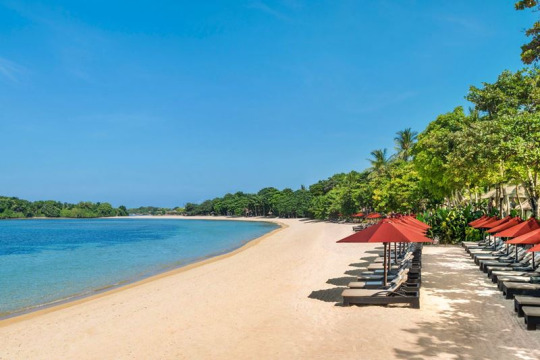
Nusa Dua Beach, a shimmering stretch of pristine white sand nestled on Bali's southeastern coast, is a true testament to the island's captivating allure. Renowned for its tranquil ambiance, luxurious resorts, and an array of enriching experiences, it stands as a premier destination for discerning travelers seeking an idyllic escape. From exhilarating water sports to cultural immersions and blissful relaxation, Nusa Dua offers a curated slice of paradise.
Discovering Nusa Dua: A Haven of Elegance
Unlike the more bustling areas of Bali, Nusa Dua was meticulously developed in the 1970s as a high-end resort enclave, prioritizing luxury, privacy, and impeccable service. This planned approach has resulted in a remarkably well-maintained and aesthetically pleasing environment, where manicured gardens meet turquoise waters.
Best Time to Visit Nusa Dua Beach
The ideal time to experience the splendor of Nusa Dua Beach is during the dry season, from April to September. These months boast abundant sunshine, clear skies, and calm waters, perfect for all beach activities and explorations. While Bali is a year-round destination, the wet season (October to March) brings more rainfall, though often in short, heavy bursts, still allowing for enjoyable moments.
Unwind and Rejuvenate: The Allure of Nusa Dua's Shores
Nusa Dua's beaches are famous for their gentle waves, making them perfect for swimming and families with young children. The soft, powdery sand invites leisurely strolls, while the serene atmosphere provides a perfect backdrop for relaxation.
Mengiat Beach: The Heart of Tranquility
Within Nusa Dua, Mengiat Beach stands out as a prime example of its beauty. This extensive stretch of coastline is known for its exceptionally calm waters and fine white sand, offering an uncrowded haven for sunbathing, swimming, and simply unwinding. You can often find local vendors offering refreshing young coconuts, adding to the authentic beach experience.
Adventure on the Water: Thrilling Water Sports
For those seeking a more active holiday, Nusa Dua offers a vibrant hub for water sports, primarily concentrated in the nearby Tanjung Benoa area.
Exhilarating Activities to Try:
Jet Skiing: Feel the adrenaline rush as you zip across the waves, often with a professional guide ensuring your safety.
Parasailing: Soar high above the ocean, taking in panoramic views of the coastline and the vast Indian Ocean.
Banana Boat & Flying Fish: Enjoy a fun and bumpy ride with friends or family on inflatable boats towed by speedboats.
Snorkeling & Scuba Diving: Explore the vibrant underwater world, teeming with colorful coral reefs and diverse marine life. Many resorts offer guided snorkeling tours, and PADI-certified dive centers are readily available.
Flyboarding: For the ultimate thrill-seeker, experience the sensation of flying as water jets propel you into the air.
Seawalker: Walk along the ocean floor with a special helmet, allowing you to breathe normally and interact with marine life up close.
Beyond the Beach: Cultural and Leisure Pursuits
Nusa Dua is more than just beautiful beaches and exhilarating water sports. The area also boasts a rich tapestry of cultural experiences and leisure activities.
Cultural Immersion:
Devdan Show at Bali Nusa Dua Theatre: Immerse yourself in the rich cultural diversity of Indonesia through this captivating performance, featuring traditional dances, acrobatics, and stunning visuals. It's an excellent option for families and those interested in Indonesian heritage.
Museum Pasifika: A hidden gem for art lovers, this museum houses an impressive collection of over 600 artworks from various artists across the Asia-Pacific region, offering insights into the region's artistic heritage.
Puja Mandala Worship Complex: This unique site symbolizes religious harmony in Indonesia, featuring a mosque, a Hindu temple, a Buddhist temple, a Catholic church, and a Protestant church, all within one complex.
Leisure and Relaxation:
Water Blow: Witness the dramatic spectacle of powerful waves crashing against limestone cliffs, creating impressive plumes of spray. It's a popular spot for photography, especially during high tide.
Bali National Golf Club: Golf enthusiasts can enjoy a premier golfing experience at this well-maintained course with stunning views.
Spa and Wellness: Nusa Dua is synonymous with luxurious spa treatments and wellness retreats. Many resorts offer world-class spas where you can indulge in traditional Balinese massages, aromatherapy, and holistic therapies.
Bali Collection: This open-air shopping complex offers a range of boutiques, restaurants, and entertainment options, perfect for a leisurely afternoon of retail therapy and dining.
Luxury Accommodation and Dining
Nusa Dua is globally recognized for its collection of prestigious five-star resorts and hotels, each offering exceptional service and world-class amenities. From private beachfront villas to expansive resort complexes with multiple pools and dining options, there's a perfect stay for every preference.
Gastronomic Delights:
Nusa Dua's dining scene is a culinary journey, offering everything from authentic Balinese cuisine to international fine dining. Many resorts boast their own signature restaurants with beachfront settings and exquisite menus. You can savor fresh seafood, traditional Indonesian dishes like Nasi Goreng and Satay Skewers, and a wide array of international fare. For a more local flavor, explore Warung Dobiel for its famous Babi Guling (roast pork).
Planning Your Nusa Dua Escape: Practical Tips
Getting There: Ngurah Rai International Airport (DPS) is Bali's main airport. Nusa Dua is a short taxi ride from the airport. While blue bemo (minibuses) serve as local public transport within Nusa Dua, taxis are the most convenient way to travel between hotels and attractions.
Accessibility: Many luxury resorts in Nusa Dua offer accessible facilities and rooms. It's advisable to check with individual hotels for specific accessibility features.
Honeymooners: Nusa Dua is a dream destination for honeymooners, offering romantic strolls along the beach, candlelit dinners, couple's spa treatments, and breathtaking sunset views.
Photography: The pristine beaches, dramatic cliffs at Water Blow, and lush resort landscapes provide ample opportunities for stunning photography. Drone views of the coastline are particularly captivating.
Conservation Efforts: The Nusa Dua Reef Foundation, in collaboration with local communities and hotels, is actively involved in sea turtle conservation, protecting nesting habitats along the beach.
Nusa Dua Beach truly embodies the essence of a luxurious Balinese getaway. Whether you seek tranquility, adventure, cultural enrichment, or simply a pampered escape, this exquisite destination promises an unforgettable experience, leaving you with cherished memories of Bali's unparalleled beauty.
Conclusion: Your Idyllic Bali Dream Awaits in Nusa Dua
Nusa Dua Beach, with its meticulously manicured landscapes, serene shores, and an unwavering commitment to luxury, stands as a premier testament to Bali's enduring appeal. It's a destination where the gentle lapping of turquoise waves against pristine white sands creates a symphony of tranquility, offering a stark yet welcome contrast to some of the island's more bustling locales.
From exhilarating water sports that ignite the spirit of adventure to profound cultural immersions that deepen your appreciation for Indonesian heritage, Nusa Dua caters to every whim and desire. The world-class resorts promise unparalleled comfort and service, while the diverse culinary scene tantalizes taste buds with global and local flavors. Whether you're seeking a romantic honeymoon, a rejuvenating family vacation, or simply a sophisticated escape from the everyday, Nusa Dua delivers an experience that transcends the ordinary.
More than just a beautiful beach, Nusa Dua is an experience – a carefully curated slice of paradise where every detail is designed to ensure relaxation, enjoyment, and lasting memories. It's a destination that truly encapsulates the magic of Bali, inviting you to unwind, explore, and discover your own perfect moment in this crown jewel of luxury and serenity.
0 notes
Text
Dream Away with a Destination Wedding to Remember
There’s something irresistibly romantic about a destination wedding. Whether it’s a beachfront ceremony under swaying palms or a mountaintop vow exchange with panoramic views, saying “I do” in a faraway place turns your wedding into a once-in-a-lifetime experience. With the rise of personalized celebrations and wanderlust-filled hearts, destination weddings have become more than just a trend—they’re a lifestyle statement for couples who want their big day to be unforgettable.
In this guide, we’ll take you on a journey through what makes destination weddings special, how to plan them seamlessly, where to go, and how to make them uniquely yours. From dreamy locations to thoughtful logistics, this article will help you create a celebration that’s both memorable and meaningful.
Why Choose a Destination Wedding?

A destination wedding is more than just a wedding—it's a vacation, an adventure, and a story waiting to be told. Here are some of the compelling reasons why couples across the globe are opting for this beautiful route:
1. Intimate Celebration
Unlike traditional weddings that often involve large guest lists, destination weddings naturally lean toward more intimate gatherings. This allows for a closer connection with guests and more meaningful interactions throughout the celebration.
2. Stunning Backdrops
Imagine exchanging vows with the ocean behind you, a castle beside you, or a vineyard below your feet. Destination weddings offer spectacular backdrops that need little to no extra decor.
3. A Built-in Honeymoon
Often, couples extend their stay and enjoy a honeymoon right where they tie the knot—no extra travel needed, just romance right away.
4. Memorable for Everyone
Guests get a mini vacation, and you create a shared experience that’s etched into everyone’s memory. The travel, the location, the adventures—they all become part of your wedding story.
Top Destination Wedding Locations
The world is filled with enchanting places that make perfect wedding destinations. Here's a curated list of favorites:
1. Santorini, Greece
With its whitewashed buildings, dramatic cliffs, and breathtaking sunsets, Santorini offers picture-perfect charm. It’s ideal for couples looking for elegance with a Mediterranean touch.
2. Udaipur, India
Known as the City of Lakes, Udaipur is a regal haven for those who dream of a royal Indian wedding. Palaces, heritage hotels, and rich culture make it one of the most sought-after locations.
3. Bali, Indonesia
This island paradise blends lush jungles with beach beauty. Whether it’s a forest chapel or an ocean-facing villa, Bali provides tranquility and tradition with a boho twist.
4. Tuscany, Italy
Rolling vineyards, historic villas, and rustic beauty define Tuscany. It’s romantic, scenic, and ideal for food-loving couples seeking a countryside escape.
5. Maui, Hawaii
Maui offers dramatic coastlines, tropical gardens, and Hawaiian hospitality. It’s perfect for laid-back couples who love nature and sunshine.
How to Plan a Destination Wedding
Planning a wedding away from home requires a bit more strategy—but with the right approach, it can be smooth and enjoyable.
1. Start Early
Book your venue 12 to 18 months in advance. Destination weddings involve travel logistics, so the earlier you start, the better for everyone involved.
2. Hire a Local Wedding Planner
A local planner knows the ins and outs—vendors, legal requirements, customs. They’ll handle details on the ground so you can stay stress-free.
3. Choose the Right Time
Weather and peak tourism seasons play a big role. Research the best times to visit your chosen destination and consider travel ease for your guests.
4. Send Save-the-Dates Early
Give guests plenty of notice—ideally 8 to 12 months in advance—so they can plan, book flights, and take time off.
5. Visit the Location (If Possible)
A pre-wedding visit can help you finalize vendors, check accommodations, and ensure everything matches your vision.
Legal Requirements for a Destination Wedding
Each country has different marriage laws. Some require residency, legal documents, or translations. Here’s a basic checklist to consider:
Valid passports
Birth certificates
Divorce or death certificates (if applicable)
Affidavit of eligibility to marry
Local marriage licenses
Your wedding planner or venue coordinator can guide you through the legal steps or help you arrange a symbolic ceremony followed by a legal one at home.
Budgeting for a Destination Wedding
Destination weddings don’t necessarily mean more expensive weddings—they just distribute costs differently. Since the guest list is typically smaller, couples often redirect their budget toward quality experiences.
Here’s how to budget smartly:
Venue + Accommodation Packages: Many resorts offer bundled deals that include ceremony spaces, catering, decor, and rooms.
Local Vendors: Work with local florists, photographers, and musicians. This often saves money compared to flying in your team.
Group Rates: Coordinate group bookings for flights and hotels to get discounts for your guests.
Digital Invites: Go eco-friendly and cost-effective with digital invitations and a wedding website for all event details.
Making It Personal
Just because you’re getting married away from home doesn’t mean it can’t reflect your personality. Here’s how to add your unique touch:
Custom Welcome Bags: Include local treats, a personal note, and essentials like sunscreen or maps.
Interactive Guest Activities: Think sunset cruises, yoga sessions, or guided city tours to bring your guests together.
Local Elements in the Ceremony: Use local flowers, traditional music, or cultural customs to enrich your ceremony.
Custom Decor: Infuse your theme with elements of the destination—like seashells, olive branches, or regional textiles.
What Guests Should Know
For your guests, attending a destination wedding is a gift of time and travel. Make it easy and enjoyable for them with clear communication:
Wedding Website: Include travel tips, hotel info, local attractions, weather, dress codes, and your event itinerary.
Assistance with Booking: Offer suggestions or travel agents to help guests with flights and stays.
Group Activities: Organize a welcome dinner or farewell brunch so guests feel included and appreciated.
The Role of Photography in a Destination Wedding
Your setting is half the magic, so your photographer becomes crucial. Choose someone experienced with destination weddings who can:
Capture scenic beauty and emotions
Work in natural lighting across various times of day
Coordinate travel and shoot multiple events
Pro Tip: Book a pre-wedding shoot at the location or a post-wedding day-after session to maximize your setting.
Sustainable Destination Weddings
Modern couples are increasingly eco-conscious. Here’s how to make your destination wedding sustainable:
Choose Eco-Friendly Venues: Resorts with sustainability certifications or green practices.
Reduce Single-Use Plastics: Avoid plastic straws, cups, or cutlery.
Local Sourcing: Use local food, flowers, and vendors to reduce carbon footprint.
Encourage Carbon Offsets: Provide guests with info on offsetting their travel emissions.
Trendy Ideas for Destination Weddings
Multi-Day Events: Turn your wedding into a 3-day experience—welcome night, main event, and day-after brunch.
Minimalist Aesthetics: Let the location shine. Simple decor, elegant florals, and natural settings are in.
Cultural Fusion: Mix local traditions with your own—for example, a Hawaiian lei exchange followed by a Western ring ceremony.
Private Villas and Estates: Book entire properties for privacy, flexibility, and a cozy atmosphere.
Real Couple Inspiration
Priya and Arjun in Udaipur: This couple combined tradition with modern flair, hosting their wedding in a heritage palace with live folk music, elephant processions, and a candlelit reception on the lake.
Chloe and Max in Santorini: With a sunset ceremony on a clifftop terrace, they kept it simple—just 25 guests, heartfelt vows, and a Greek feast under the stars.
Asha and Ryan in Bali: Their beachside wedding included a spiritual blessing, barefoot vows at golden hour, and fire dancers at the reception.
Final Thoughts
A destination wedding is more than a ceremony—it’s a shared journey, a magical escape, and a cherished memory in the making. With thoughtful planning, a dash of adventure, and the right partners, your dream wedding abroad can become a reality.
Let your love take flight. Whether you're heading to tropical shores or ancient cities, the world is waiting to celebrate with you.
0 notes
Text
ChatGPT gave me a two-day family itinerary for Malacca, Malaysia
Ah, Malacca, Malaysia! A city where history isn’t just in the textbooks but practically oozes from the very bricks and mortar. Once upon a time, around the early 15th century, a Sumatran prince named Parameswara decided that being a refugee wasn’t quite his style. After a bit of kingdom-hopping and perhaps one too many close calls, he stumbled upon a humble fishing village. Legend has it, while lounging under a tree (as one does when contemplating world domination), he witnessed his hunting dog getting the boot from a feisty mouse deer. Taking this as a sign — because, why not? — he founded Malacca right there and then in Malaysia.
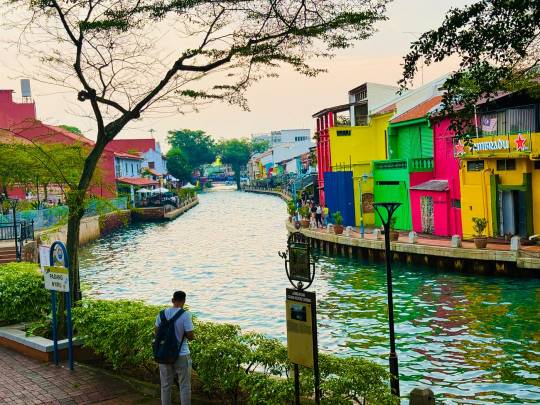
Now, Malacca wasn’t just any port; it became the port. Thanks to its prime spot along the Strait of Malacca, it turned into a bustling hub where traders from Arabia, India, China, and beyond came to swap goods, stories, and probably the occasional recipe. The Ming Dynasty of China even played protector, ensuring Malacca’s safety from pesky neighbors like Siam and Majapahit. This protection wasn’t just for show; it helped Malacca blossom into a major center for trade in Malaysia between China, India, the Middle East, Africa, and Europe.
But, as with all good things, Malacca’s golden age had its interruptions. In 1511, the Portuguese decided they fancied the place and took over, introducing European flavours to the mix. Not to be outdone, the Dutch swung by in 1641, followed by the British in the 19th century. Each left their mark, turning Malacca into a delightful architectural rojak (that’s a mixed salad, for the uninitiated).
Today, as you wander the streets, you’ll find a smorgasbord of influences — Chinese temples, Portuguese forts, Dutch squares, and British colonial buildings — all standing as testament to Malacca’s rich and varied past. But, no Michelin Restaurants in Malacca, unlike it’s “sister” Penang, just up the Malaysia coast…
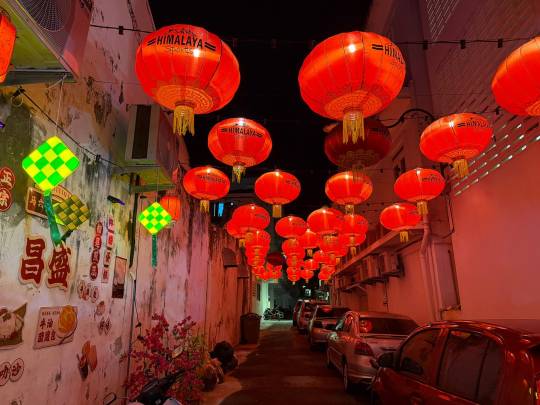
Are you a history buff, a foodie, or just someone who appreciates a good mouse deer anecdote, well my friends Malacca will serve you up a feast for the senses in so many ways. It’s a place where every corner has a story, and food, food, food… We love you Malacca!!!
📍 Day 1: Exploring Historic Malacca & Iconic Eats
🍳 Breakfast: The Daily Fix Café
☕ Kickstart your day with fluffy pandan pancakes and rich Malacca-style coffee in this cozy heritage café. A perfect mix of local flavours and family-friendly vibes!
🏰 Morning: Strolling Through Jonker Street & Dutch Square
Walk through Jonker Street, famous for its charming shophouses and colorful street art, similar to Boat Quay and Bali Lane in Singapore.

Climb up to St. Paul’s Hill for stunning city views and let the kids explore the old fort ruins.
🍛 Lunch: Nancy’s Kitchen (Baba Nyonya Cuisine)
One of the best spots for authentic Peranakan food! Try the Ayam Pongteh (braised chicken), Nyonya Laksa, and Kueh Pie Tee. A must-visit for food lovers!
🛶 Afternoon: Melaka River Cruise & Cheng Hoon Teng Temple

Visit Cheng Hoon Teng Temple, Malaysia’s oldest Chinese temple, full of beautiful carvings.
🍗 Dinner: Pak Putra Tandoori & Naan
A legendary spot for juicy tandoori chicken and fluffy garlic naan. Super popular, so go early or be ready to queue!
Portuguese Settlement: is another spot to try for dinner. Just prepare yourself to get MOBBED as all the restaurants have “runners” that try to entice you to their restaurant. It’s all rather horrible and annoying to be honest. Welcome to Malaysia, haha.

🌙 Night: Jonker Walk Night Market (Fri-Sun)

Full Malacca Travel Review HERE.
📍 Day 2: Nature, Adventure & More Amazing Food!
🥣 Breakfast: Kaya Kaya Café
A laid-back spot serving Nyonya Kaya Toast, soft-boiled eggs, and Gula Melaka-infused coffee. Great for families!
🐒 Morning: The Shore Oceanarium & Mini Zoo
Visit The Shore Oceanarium for an interactive marine experience — kids love the touch pools and 3D exhibits!
Check out The Shore Sky Tower for breathtaking city views.
If you love wildlife, Melaka Butterfly & Reptile Sanctuary is another great option!
🍜 Lunch: Kedai Kopi Chung Wah (Chicken Rice Balls)


🚴 Afternoon: Free & Easy Fun
Rent a family-friendly bike and cycle along Kampung Morten for a glimpse of traditional Malay village life.
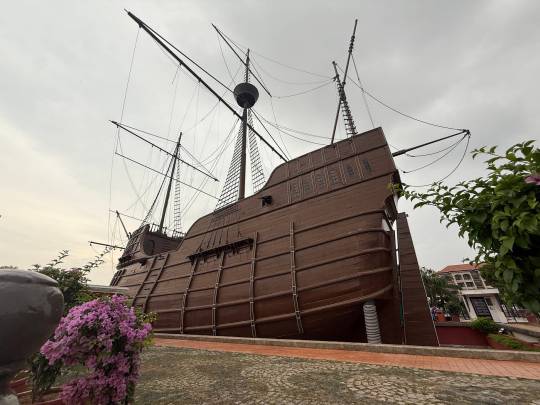
🦐 Dinner: Aunty Fatso Seafood
A top seafood restaurant famous for butter prawns, salted egg squid, and sizzling hot plate tofu. Fresh, flavourful, and perfect for a family feast!
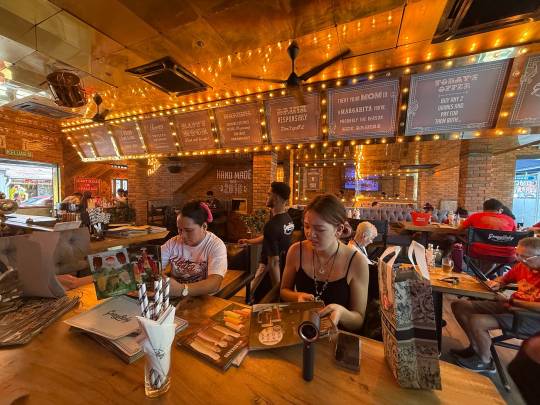
🍦 Dessert: Klebang Coconut Shake
End the trip with a refreshing coconut shake topped with vanilla ice cream — one of Malacca’s most famous drinks!
Full Malacca Travel Review HERE.
I’ll finish as I started, with Ah, Malacca — a place where history oozes from every brick and the aroma of streetfood wafts through the air like a siren’s call to your stomach, #BeProud Malaysia, she’s a beauty. Stroll down Jonker Street, where the night market buzzes with energy, and you’re lured by the scent of satay celup — skewers dunked into a communal pot of bubbling peanut sauce, a dish so communal it practically requires a friendship bracelet. Then there’s the famed chicken rice balls, which are exactly what they sound like: rice compressed into spheres that challenge your chopstick skills and your appetite.
Ever tried cendol? It’s a dessert that looks like it was assembled during a power outage but tastes like a sweet, icy hug on a sweltering day. And let’s not forget the Nyonya laksa, a spicy, coconutty (is there such a word?) noodle soup that will make your nose run and your heart sing.
Malacca is a place where your diet plans come to die, and your your gob is resurrected in a blaze of glory. Malacca doesn’t just feed you; it seduces you with its flavours, leaving you in a food-induced stupor, questioning whether you should ever leave. Spoiler alert: you won’t want to.
0 notes
Text
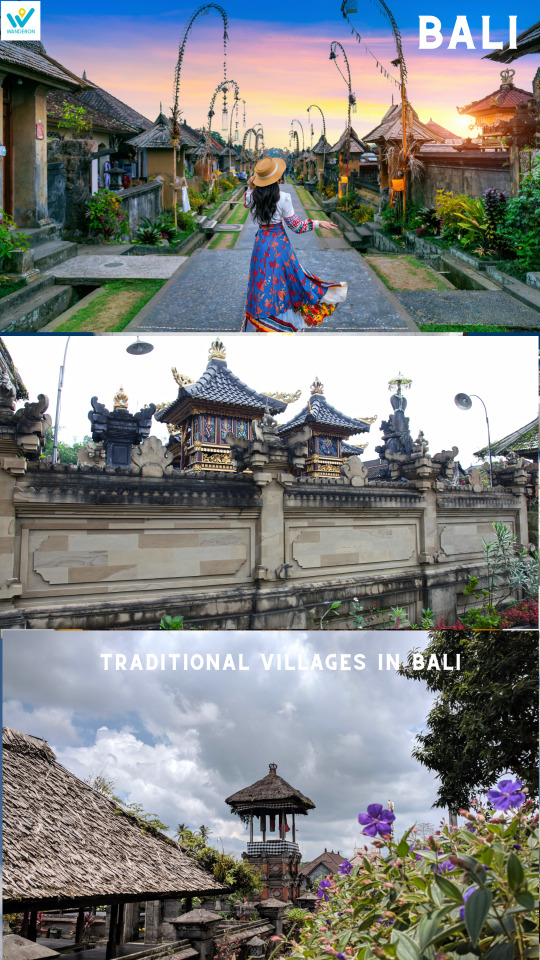
Bali is more than just beaches and nightlife—its true soul lies in the traditional villages scattered across the island. These villages offer a glimpse into the rich Balinese culture, ancient customs, and artistic traditions that have been preserved for generations. In this guide, explore the 10 most popular traditional villages in Bali that are perfect for cultural tourism. From the crafts of Ubud to the tranquility of Penglipuran, each village has something unique to offer. Whether you’re seeking authentic architecture, local rituals, or traditional Balinese crafts, these destinations allow you to experience the island’s heritage firsthand. Walk through cobbled paths, visit age-old temples, and interact with locals who proudly keep their customs alive.
0 notes
Photo
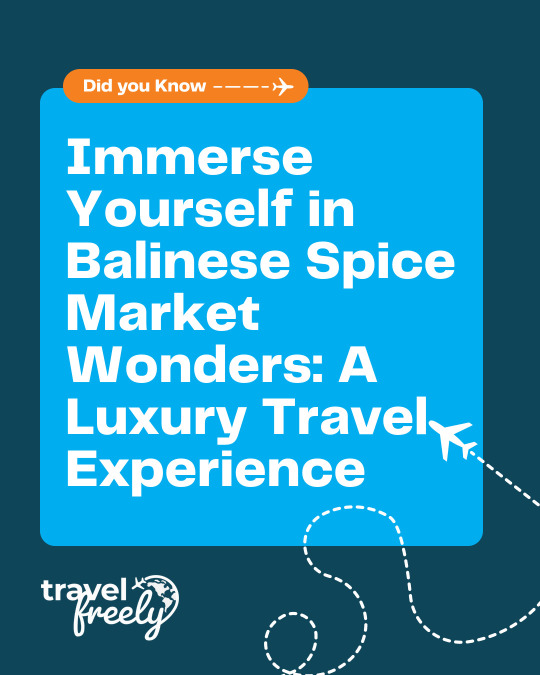
Dive into the vibrant colors and intoxicating aromas of Balinese spice marketsa sensory feast for luxury travel aficionados seeking unique experiences. Heres how to best explore these iconic local markets: 1. **Ubud Traditional Art Market**: Located at the heart of Bali's cultural center, this market offers a mix of art, crafts, and locally sourced spices. Engage with vendors to learn about the history and uses of different spices. 2. **Gianyar Night Market**: Best experienced in the evening, this bustling market showcases an array of spices grown on the island, along with street food stalls where traditional Balinese flavors come alive. 3. **Kuta Art Market**: For a more tourist-oriented visit, Kuta delivers accessible spice selections along with souvenirs. Visit in the early morning to experience the market's lively trade. 4. **Jimbaran Bay's Morning Market**: Known for fresh seafood and local produce, this market also offers a variety of spices often used in traditional Balinese recipesperfect for culinary enthusiasts. 5. **Sanur Night Market (Pasar Malam Sindu)**: As the sun sets, explore this vibrant night market brimming with lively interactions, offering a wide selection of spices and foodie delights. Embrace the rich cultural heritage of Bali through these spice markets, where you can taste, smell, and see the local life unfold. These experiences highlight the essence of Balis culinary and cultural tapestry, making them essential on any luxury travel itinerary. #BaliSpiceMarkets #LuxuryTravel #CulturalExploration
0 notes